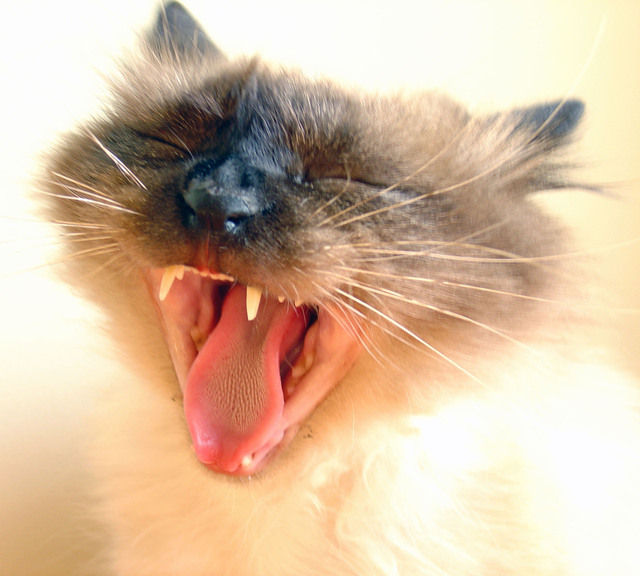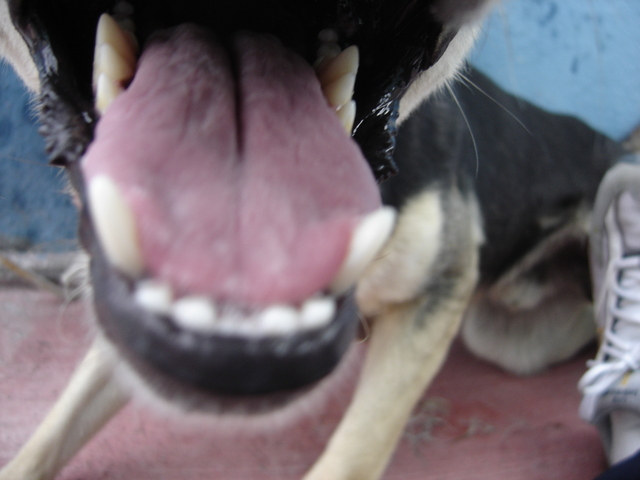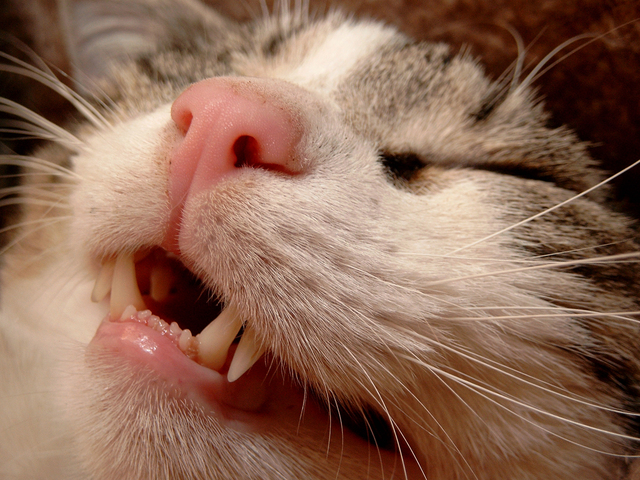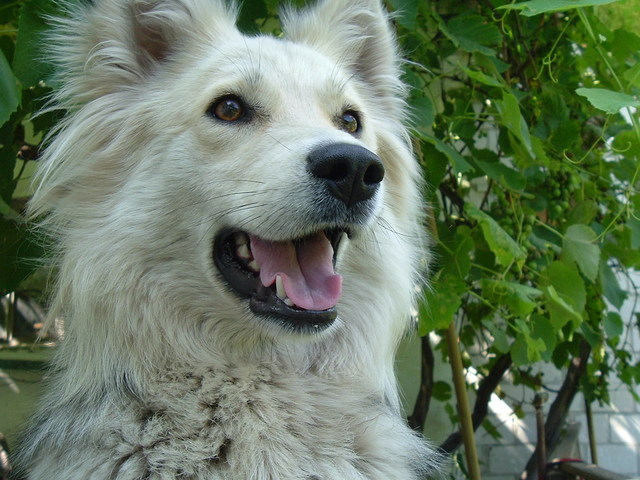You Can Brush Your Pet’s Teeth!
My dog, Seba, loves giving kisses! But sometimes they’re smelly, if I’ve forgotten to brush her teeth. What? Brush my dog’s teeth? Yes! Not only does she tolerate me brushing her teeth, she expects it and there are some things she seems to enjoy—such as the peanut butter flavored toothpaste!
Here’s a vid of me brushing Seba’s teeth.
Ok, so yes–you should brush your pet’s teeth. But how do you know when? Ideally, a pet’s teeth should be white (not yellow, brown or gray), their gums should be bubble gum pink—except in the case of pets whose gums are a different color naturally—and they should not have bad breath.
Pets do not usually develop cavities the way children do, but they can contract periodontal (gum) disease due to buildup of tartar. Once the gums are infected and inflamed, they can lose their teeth. But a long time before that happens, they may be having pain that they won’t show in the same way you would…
In addition, once infection sets in, their immune system becomes compromised, and this can lead to heart and other types of disease.
I was lucky with Seba, because greyhounds are quite used to being touched all over and handled with humans doing all kinds of strange things to them—including dressing them in racing silks, winning banners…and later, when they are adopted to a home, everything from fancy collars with dangly bling to coats to booties for their feet in the winter! So it was an easy segue to start putting a toothbrush in her mouth.

But HOW Do You Brush Your Pet’s Teeth?
But, if your pet isn’t used to this, the way to start is by using something on your finger that the pet loves—like tuna juice for cats or plain peanut butter for dogs (just be sure to avoid any peanut butter containing xylitol as a sweetener, since this is highly toxic to our canine friends). You want to approach the pet from the side, not face to face. A smaller dog or a cat you can place on your lap, with its face away from you. Our cat lovers may want to try a Cat In The Bag as an easy way to brush your feline’s teeth, and it can be used in many other instances, as well.)
Seba knows when Momma is talking baby talk to her, she is safe and something good is coming in the way of treats and pets. But any reassuring sound you make or praise you give throughout the process will create a pleasant association for your pet. Start for short sessions on a regular basis and build up to a full mouth brushing, starting at the back on the inside and using short, circular strokes with the brush.

The Facts About Pet Gum Disease
You may have thought that gum disease only affects humans, but in fact pet gum disease is the leading dental problem vets see, and affects 80% of dogs and 70% of cats. In general, pets are more susceptible as they grow older, but toy breeds are particularly so, because of tooth crowding.
Gum disease in pets is caused by the same things as in humans: bacteria from leftover food particles causes plaque along the gumline. If not cleaned away, the plaque hardens into tartar, which clings strongly to the teeth. This can happen in as little as 3 days. Gingivitus, bad breath and inflammation of the gum follow which, if still untreated, can cause loosening of the teeth, abcesses and further infection. All during this process, the pet is in pain–and, unlike you, will not be able to schedule an appointment for themselves!
Signs of periodontal disease in pets are:
- Bad breath
- Excessive Salivation
- Loose or Missing Teeth
- Loss of appetite
- Obvious pain or difficulty while eating
- Red, inflamed gums
- Yellow brown tartar deposits

But What About The Dental Treats I Give My Pet?
Like a lot of other pet products on the market, these are well loved by owners–but keep in mind they do not replace a toothbrush or professional cleaning. Treats should not be soft (or become soft as in the case of rawhides) as hard food and treats help remove built up plaque from the pet’s teeth. You want a tough, chewy treat, but not extremely hard like cow hooves or pig ears. Hard objects can chip and wear down teeth prematurely. However, in general, providing your pet a chew toy is beneficial, even if you spot some bleeding of the gums, as in particular dog gingiva is more sensitive than that of humans.
Healthy gums should be bubble gum pink with no signs of redness or irritation.

At The Vet
As part of your pet’s routine, your vet should be checking their mouth, gums and teeth. If they find your dog needs a cleaning, they will use one of two methods (generally, under anaesthesia): manual or mechanical scaling.
Manual scaling is used for mild cases of tartar buildup or as a followup to a mechanical scaling procedure.
Mechanical scaling uses ultrasonic scalers powered by compressed air.
After scaling off the tartar, the pet’s teeth are polished, just like a human’s. This is a key process to ensure the natural nooks and crannies of the teeth are smooth, and less easily able to allow tartar to adhere. Irrigation with a water based solution is the final step in the process, rinsing away any further debris.
Sometimes, your pet may need teeth removed–especially if they are extremely loose, broken beneath the gumline or split. This ensures your pet can have comfortable meals after healing and that any infection cannot spread throughout the body.
So here’s the takeaway: yes, you can brush your pet’s teeth! And you should. It can lengthen their life considerably, not to mentione their enjoyment of it. Plus–no smelly kisses!

Joy Jones, Publisher, is also the Vice President of Your Pet Space, a cage free dog boarding facility serving the greater Las Cruces, NM area. She is also a syndicated columnist living with her husband Dave (below). When not working on Your Pet Space, she writes a metaphysical column, as well as urban fantasy and humor. You can e-mail her at joy@yourpetspace.info as well as send her a friend request on Facebook.

